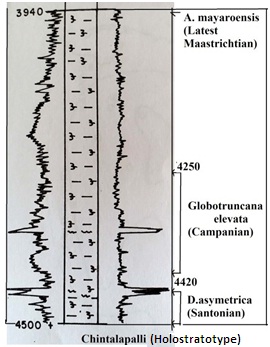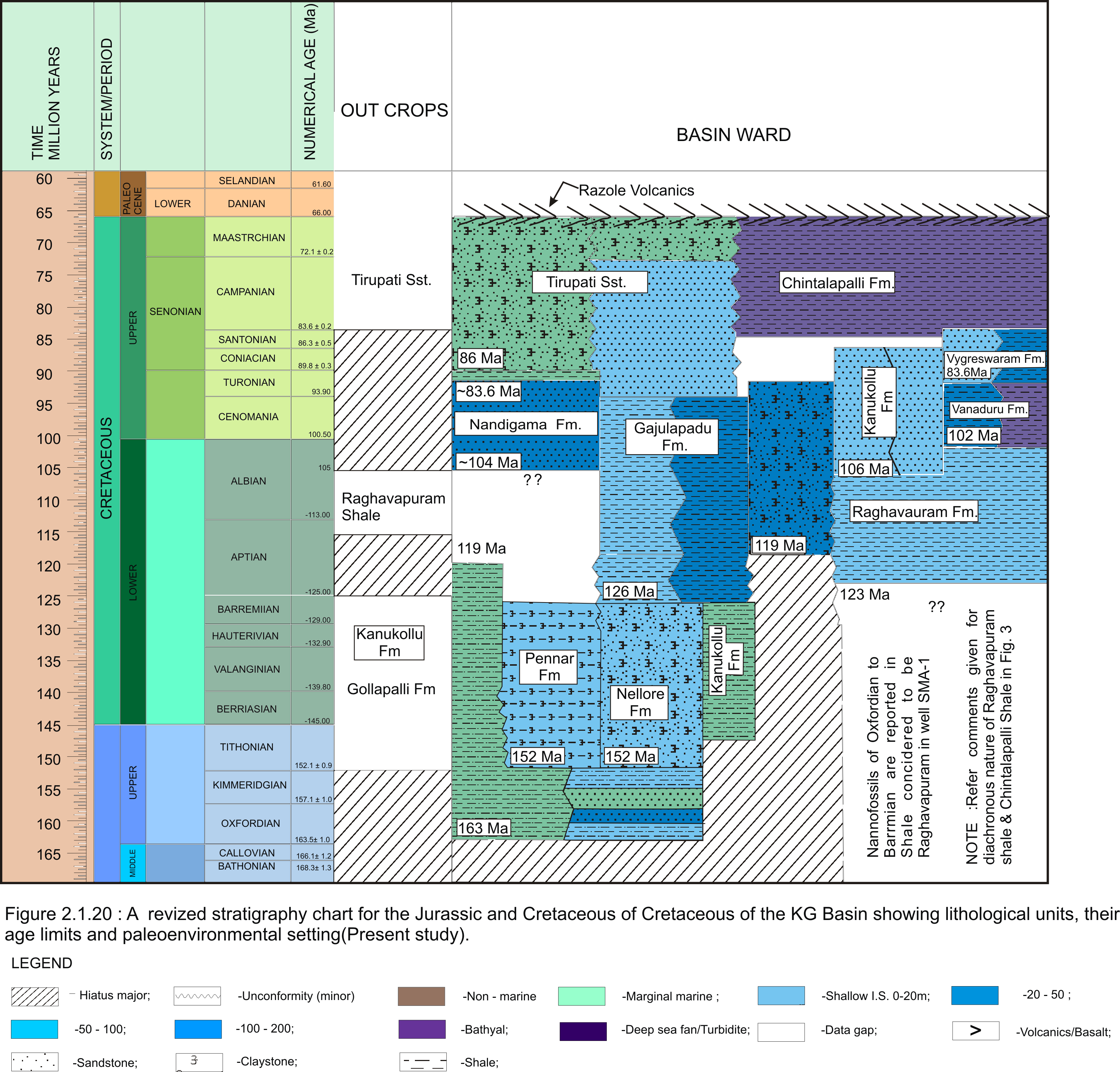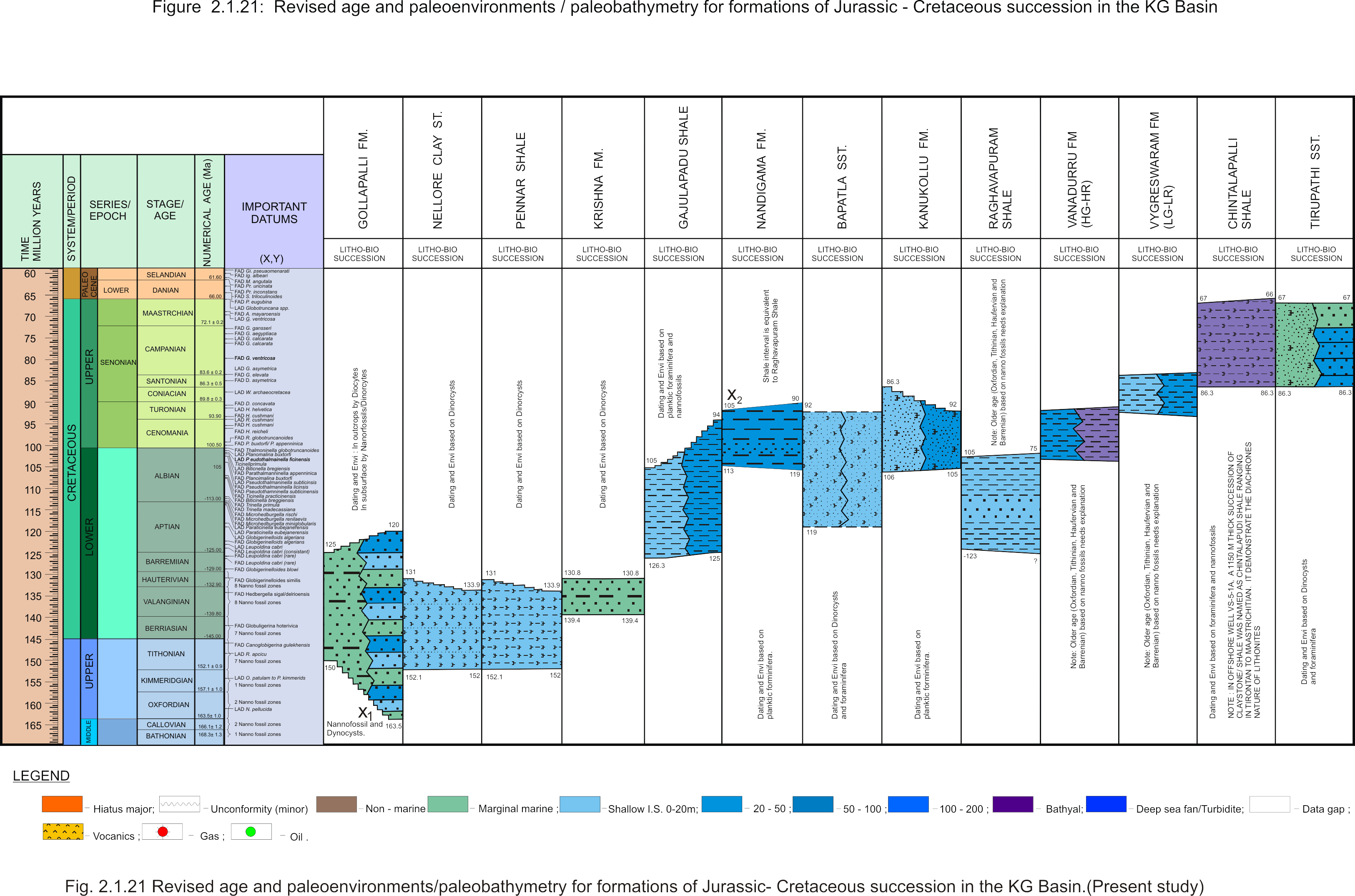Chintalapalli Fm
Type Locality and Naming
BASINAL: The type section is in the well Chintalapalli-A (depth interval: 3740-4225 m). The hypostratotype is in the well Narasapur-A (depth interval: 3600-4240 m). It was named after the Chintalapalli village by ONGC team steered by Venkatarengan et al.(1993) and issued as Document-VII by KDMIPE, ONGC, Dehradun (1993). [Original Publication: Venkatarengan, R., Rao, G.N., Prabhakar, K.N., et al., (1993b) Lithostratigraphy of Petroliferous Basins, Document VIII, Krishna Godavari Basin, KDMIPE, ONGC Publication, pp. 1-29.]. Reference well: Well Narasapur-A (depth interval: 3600-4240 m).
Synonyms: Chintalapalli Shale
[Figure: Generalized Late Cretaceous-Cenozoic lithostratigraphy transect, Krishna-Godavari Basin. From Keller et al., 2011, Jour. Geol. Soc. India, 78:399-428, their Fig. 2]
[Figure: Map showing the locations of designated holostratotype section for the formation in the KG Basin (After ONGC, Pandey and Dave, 1998) in Raju et al., 2021, ONGC Bulletin, Special Issue, Vol. 56, No. 2]
Lithology and Thickness
Claystone. Shale is the main lithology of the type section in the well Chintalapalli-A. The shales are grey, hard, compact, massive, feebly calcareous, micaceous and occasionally fissile. In the lower section, few sandstones with minor lamination of claystone are present. In Narasapur-A well, the Chintalapalli Shale consists of grey claystone with thin beds of very fine- to coarse-grained sandstone. The lower half is generally non-calcareous. It has a thickness varying from 485-640m and increases to > 2000m in offshore.
[Figure: Lithology, GR, Resistivity and planktic datums of the holostratotype of the Chintalapalli Formation in the Well Chintalapalli-A (after Bijai Prasad, 1999)]
[Figure: A revised stratigraphy chart for the Jurassic and Cretaceous of the KG Basin showing lithological units, their age limits and paleoenvironmental setting (present study) in Raju et al., 2021, ONGC Bulletin, Special Issue, Vol. 56, No. 2]
Relationships and Distribution
Lower contact
Unconformable with the Vygreswaram Fm.
Upper contact
Conformable with the Razole Fm.
Regional extent
GeoJSON
Fossils
Planktic foraminifera- Dicarinella asymetrica, Globotruncanita elevata and Abathomphalus mayaroensis
Age
Depositional setting
Outer neritic-Bathyal
[Figure: Revised age and paleoenvironments/paleobathymetry of formations of Jurassic-Cretaceous succession in KG Basin in Raju et al., 2021, ONGC Bulletin, Special Issue, Vol. 56, No. 2]
Additional Information




